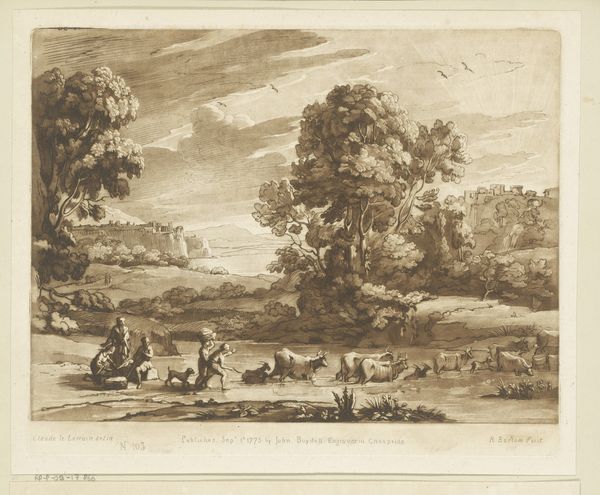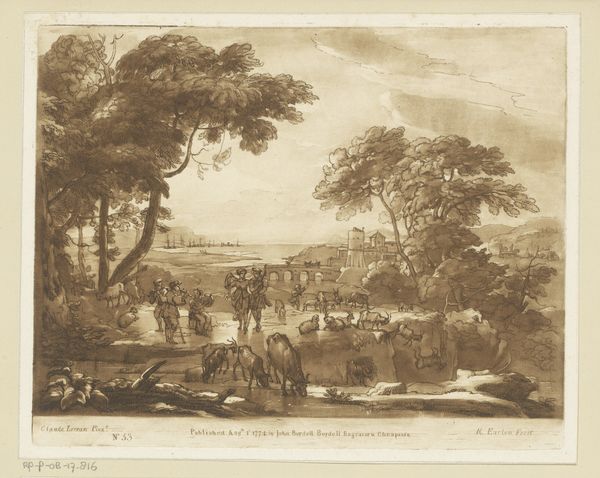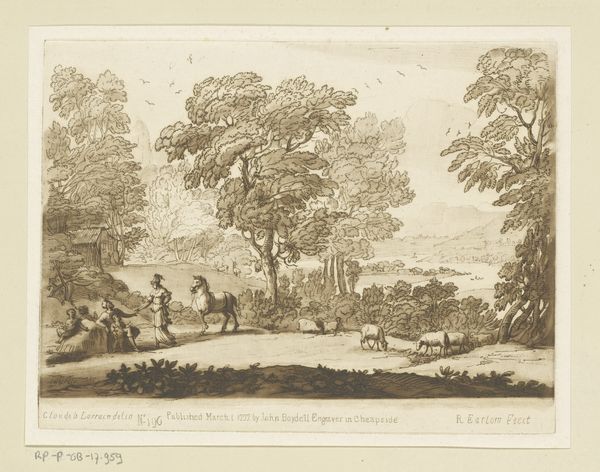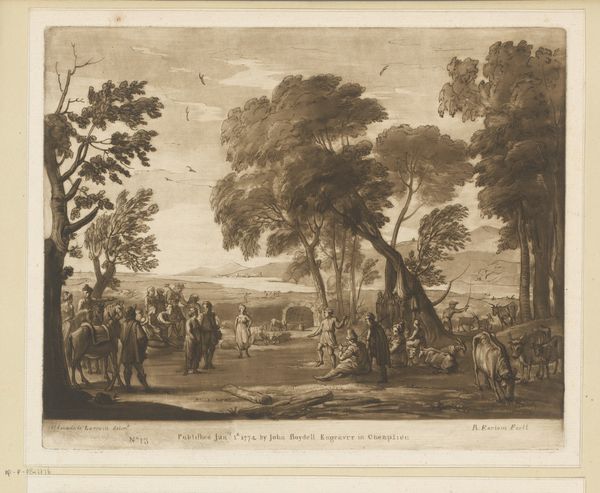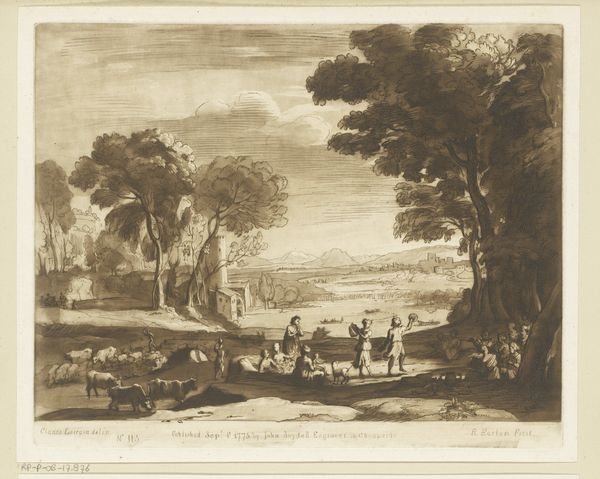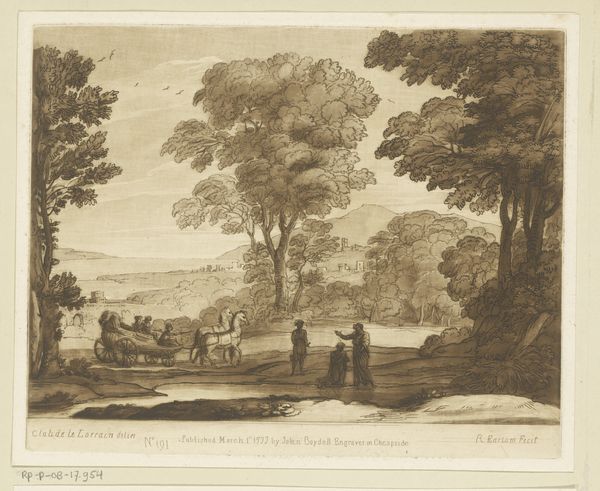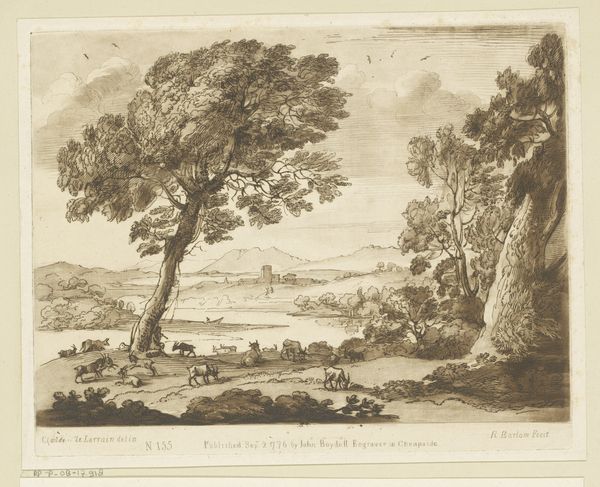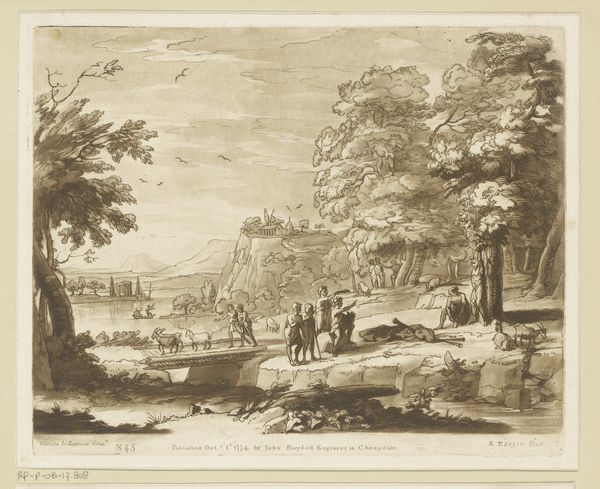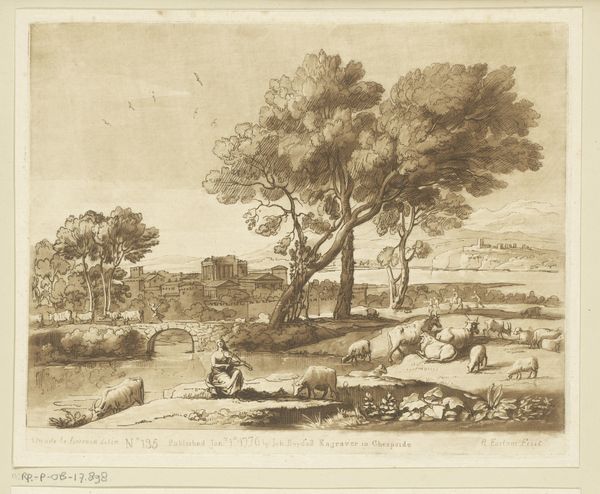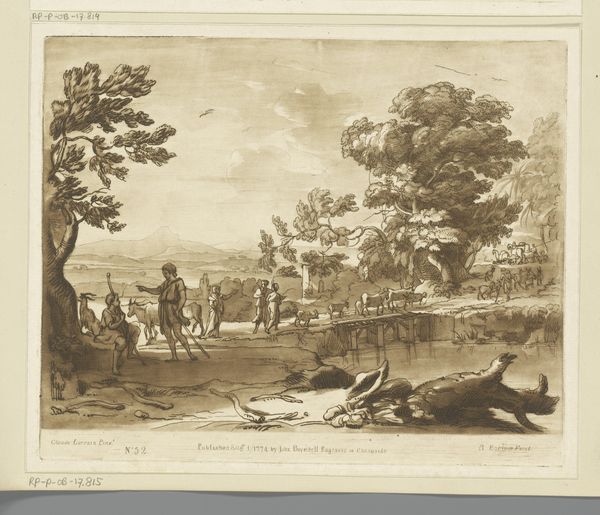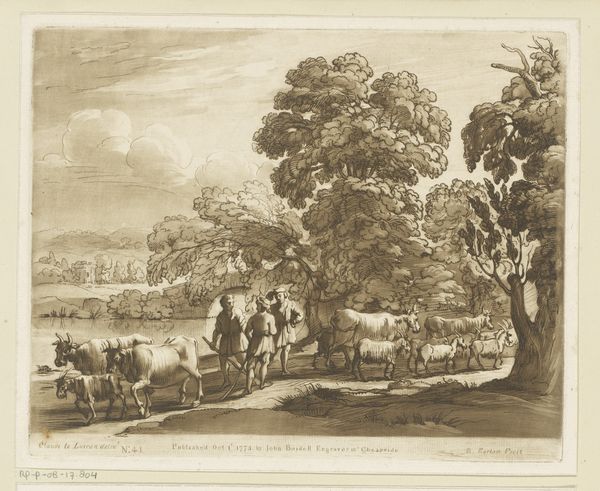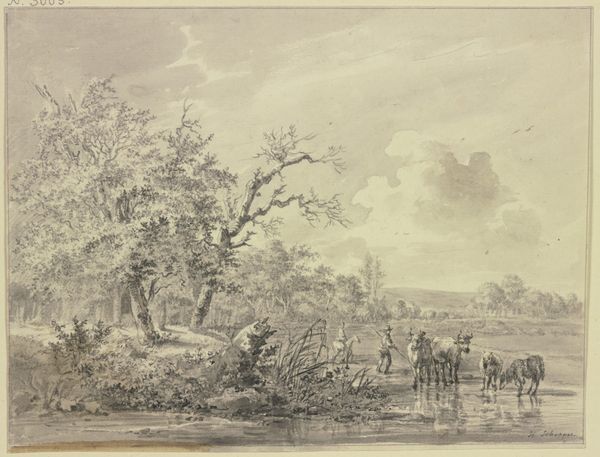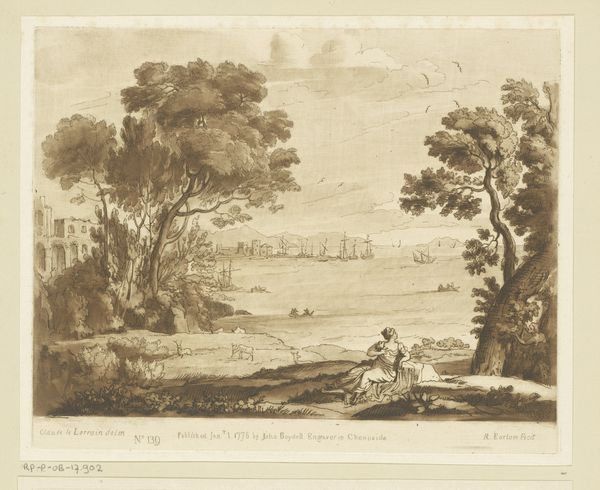
print, etching, engraving
# print
#
etching
#
landscape
#
classical-realism
#
genre-painting
#
engraving
Dimensions: height 206 mm, width 256 mm
Copyright: Rijks Museum: Open Domain
Curator: There's a quiet grandeur to this piece, a sense of classical pastoral life rendered in sepia tones. This is "Landschap met Mercurius en Battus," or "Landscape with Mercury and Battus," possibly created around 1776 by Richard Earlom. It’s a print, combining etching and engraving. Editor: Immediately, I'm struck by the composition. It feels very stage-like, with the dark trees framing the lighter, more open landscape behind. A sort of idealized Arcadia, tinged with melancholy. Curator: The classical-realism style definitely leans into that idyllic, timeless quality. Looking closely, the imagery depicts Mercury, the messenger god, in disguise, attempting to steal Battus's cattle. It draws on a myth found in Ovid's Metamorphoses, speaking to the themes of deception and reward. Editor: Ah, so even in paradise, there's a hint of transgression. Is that commentary on the political climate, the aristocratic privilege that landscape paintings often showcased? The landed gentry enjoying their domains, while trickery unfolds within the very landscape they claim to own? Curator: Potentially. Think about the function of landscape art at this time. These kinds of artworks reaffirmed social hierarchies while simultaneously feeding into a yearning for a simpler life. Mercury, with his caduceus, is such a powerful symbol: the bringing together of two worlds, yet here, perhaps, revealing their innate tensions. Editor: And the cows, of course! Such quotidian presence. They’re just drinking, unaware of the divine drama playing out nearby. I wonder, how would viewers in the late 18th century, conditioned to view the classics, interpret this subtle blending of high mythology and mundane reality? Would this work speak to concerns about truth, honesty, wealth, and duplicity in the socio-economic environment of the day? Curator: Intriguing to consider! By bringing mythological figures down to earth, amongst these farm animals, Earlom subtly democratizes the classical narrative. It allows viewers to connect to these grand narratives and to see the classical world infused into the every day, potentially disrupting classical art's elitist associations. Editor: Looking at this today I find it is a thought provoking commentary about the human-and sometimes, divine- relationship with truth, power and even nature itself. Curator: A rewarding reflection, that reveals how art may be both a cultural record and timeless emotional commentary.
Comments
No comments
Be the first to comment and join the conversation on the ultimate creative platform.
